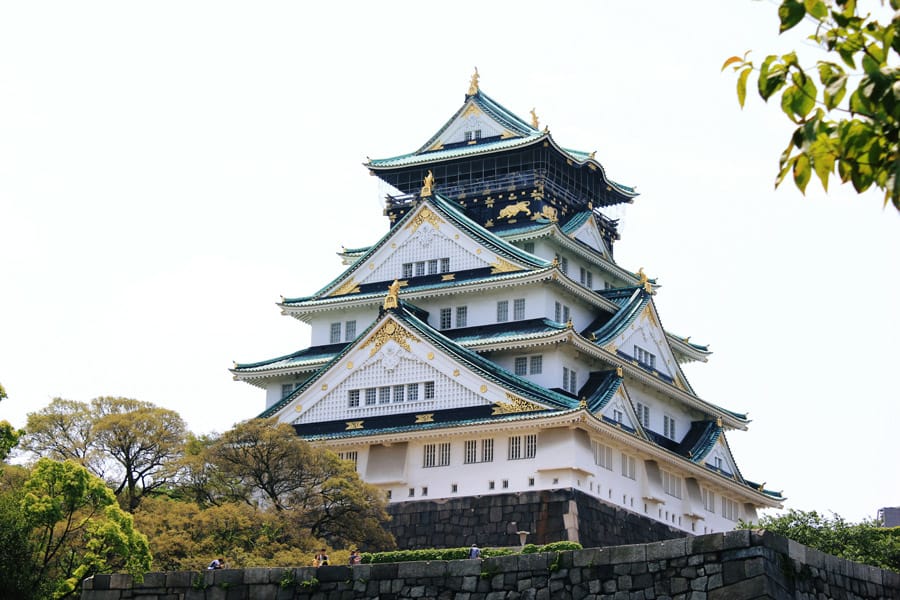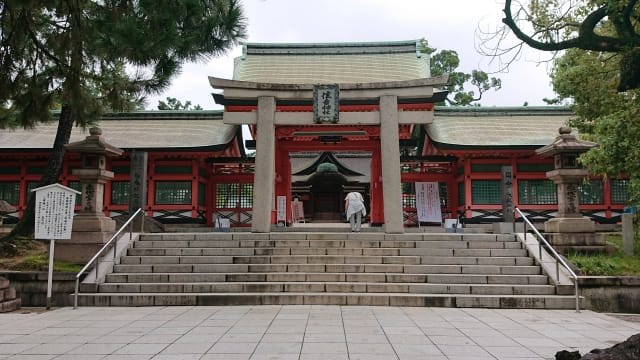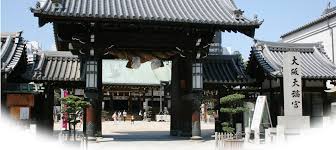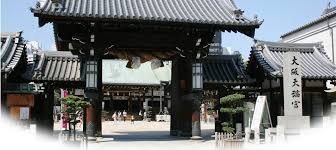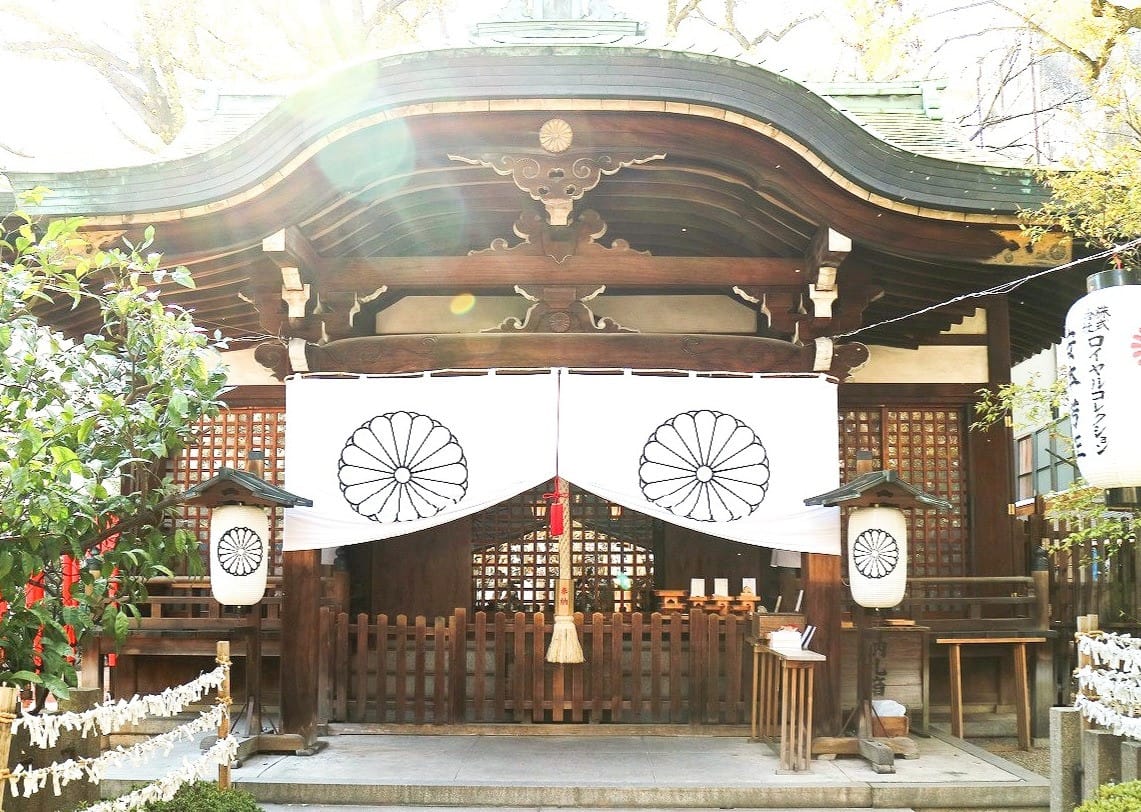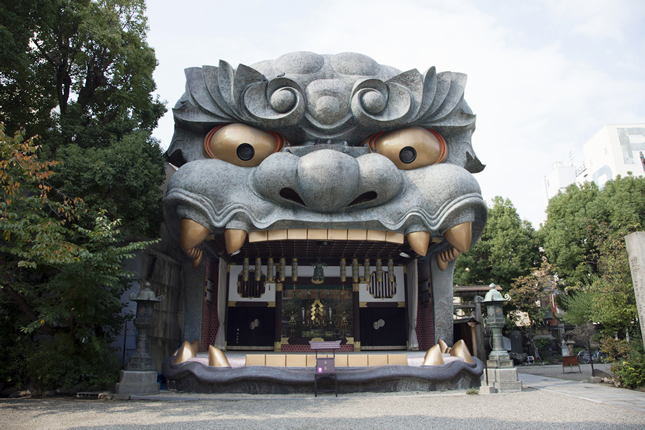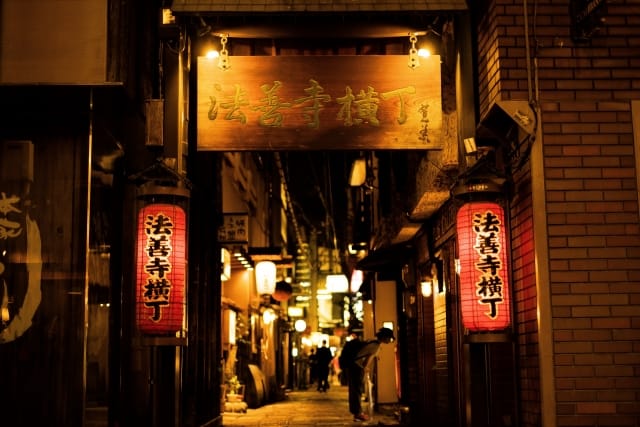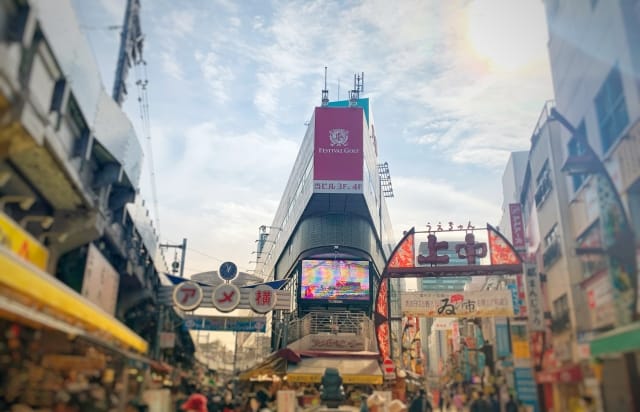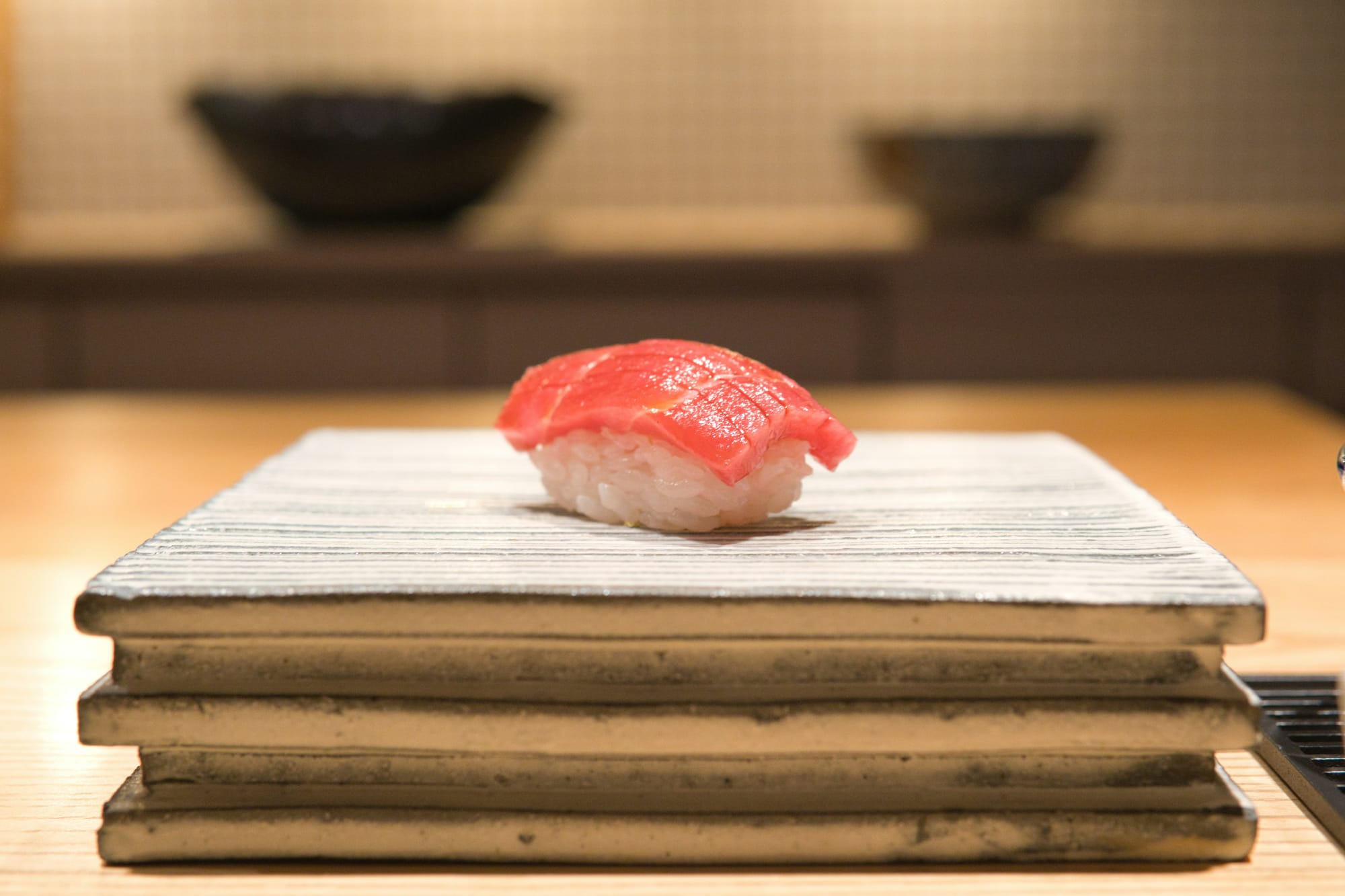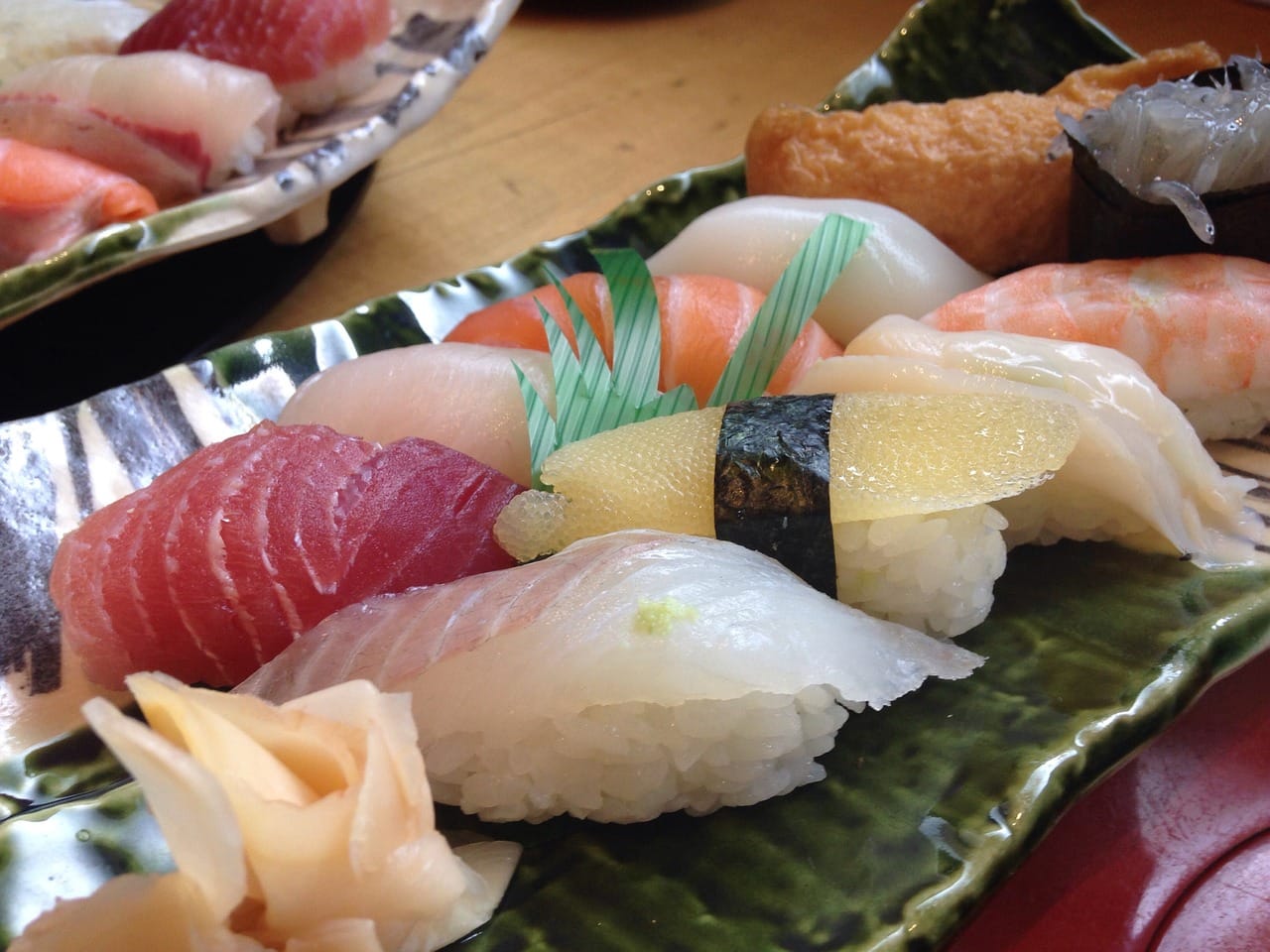Osaka's Shrines and Temples: Must-Visit Spots for Good Fortune
While Kyoto might be the first city that comes to mind when thinking of temples and shrines, Osaka is also home to many historic religious sites. I've updated this 2025 guide based on my four visits to Osaka in 2024 while researching tourist destinations.
Another reason for this update is the growing popularity of tours led by local residents. These local guide tours allow visitors to explore Osaka while gaining deeper insights into both the city's food culture and Japanese traditions, all while discovering tourist spots and culinary destinations.
Magical Trip offers such local-guided tours of Osaka. In 2024, our tours was ranked #1 among all tours on TripAdvisor.

For those interested in exploring Osaka's temples, shrines, and tourist spots while learning from local expertise, I highly recommend the "5-Hour Osaka Highlights Bike Tour with Lunch." Even as someone who has visited Osaka many times since childhood, I discovered new information about local culture and attractions that I hadn't known before - it was an incredibly enjoyable tour.
For food enthusiasts, I recommend the "Osaka Local Foodie Tour in Dotonbori and Shinsekai" or the "Osaka Bar Hopping Night Tour in Namba." I hope more visitors will discover Osaka's charm through Magical Trip's tours.
If you are interested in Japanese culture, you will definitely regret not enjoying Osaka Jo Castle, One of the Osaka's icons!
Enjoy the secrets and attractions of Osaka Castle along with the guide articles below, and Magical Trip's cycling tours are also featured below.
Introduction
Osaka, Japan's second largest metropolitan area after Tokyo, has long been known as the "nation's kitchen" and a city famous for its culinary delights. It's a place where unique food culture has flourished. As a hub where goods from all over Japan have converged since ancient times, Osaka has developed while preserving its traditions.
This blend of tradition and progress has made Osaka a popular destination for foreign visitors. In fact, about 10% of foreigners living in Japan reside in Osaka.
Located near Kyoto, the former capital of Japan, Osaka is dotted with numerous ancient shrines and temples that reflect this influence.
These temples and shrines around Osaka vividly reflect Japanese history and culture, rivaling those found in Kyoto in terms of tradition and significance.
In this article, we'll explore in detail the temples and shrines scattered throughout Osaka.
What exactly are temples and shrines?
The term "Jinjya bukkaku" refers collectively to Shinto shrines and Buddhist temples, each serving different purposes and enshrining different entities. Shrines are places that enshrine Shinto deities, while temples are places that enshrine Buddhist symbols.
Shrines, which enshrine Japanese gods and spirits, serve various roles such as hosting New Year's visits (hatsumode) to pray for good fortune at the beginning of the year, as well as wedding ceremonies.
Temples are Buddhist institutions in Japan that, besides being tourist attractions, serve as venues for funeral services and Buddhist teachings. They also play a role in forming community connections by hosting events and study sessions.
Why are they important to Japanese people?
Temples and shrines have long been cherished by Japanese people as sacred places. This is because Japanese people have a sense of familiarity with temples and shrines as holy sites.
Praying at temples and shrines is believed to purify one's body and mind, making them important places. Among these, particularly sacred spots are called "power spots" and have been valued as places where one's fortunes can improve.
Many Japanese people visit these power spots when they feel their luck is down or when they're feeling depressed, to receive energy. Personally, when I feel my luck is low or I'm feeling mentally unwell, I visit shrines known as power spots to receive their energy. Thanks to this, I always feel refreshed after visiting a shrine.
Must-visit temples and shrines around Osaka! 3 recommended spots you can visit from early morning
Sumiyoshi Taisha
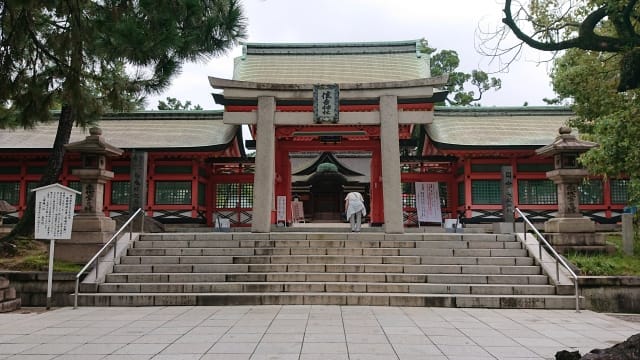
Sumiyoshi Taisha, located in Sumiyoshi Ward, Osaka Prefecture, is known as the head shrine of all Sumiyoshi shrines across Japan. Its main hall is designated as a national treasure, and it has long been revered as a shrine dedicated to sea deities.
As a result, it became known as a place to pray for safety at sea, and since the Edo period, it has been famous among seafarers and fishermen as a place to pray for safe voyages. It also enshrines gods of agriculture and industry, attracting farmers and business people for prayers.
At the entrance of Sumiyoshi Taisha, there is a bridge called Sorihashi, which is said to bring good luck just by crossing it. This bridge has a maximum slope of 48 degrees. There are also various power spots within the shrine grounds, so if you're seeking good fortune, be sure to visit.
Address: 2-9-89 Sumiyoshi, Sumiyoshi-ku, Osaka
Hours: 6:00-16:00 (April-September), 6:30-16:30 (October-March)
Closed: Never
Phone: 06-6672-0753
Official website: https://www.sumiyoshitaisha.net/
If you are interested in Sumiyoshi Taisha Shrine, check the article below! I summarized in more details and how I felt there.
Osaka Tenmangu
Source: Official website
Osaka Tenmangu, located near the Tenjinbashisuji Shopping Street, known as Japan's longest shopping arcade, is a shrine dedicated to Sugawara no Michizane, famous as the god of learning. While renowned for academic success, the shrine grounds also house various power spots believed to bring benefits such as matchmaking and warding off evil.
One famous spot is the Hoshiai Bridge over the Hoshiai Pond on the north side of the shrine grounds. It's said that if you throw a wish ball and hit the plum blossom-shaped target, your wish will come true. This is quite challenging - I've tried several times but never managed to hit the target. If you do hit it, it's incredibly exciting.
The wish balls come in different colors, each associated with different wishes. You can choose up to three wish balls, and it costs 500 yen to try. If you want to test your luck, give it a shot!
Additionally, the Tenjin Festival, held from late June to July 25th, is known as one of Japan's three major festivals along with the Kanda Festival in Tokyo and the Gion Festival in Kyoto. If you're visiting Osaka in summer, try to time your visit with this festival.
Address: 2-1-8 Tenjinbashi, Kita-ku, Osaka
Hours: Summer 5:30-18:30, Winter 6:00-18:00
Closed: Irregular
Phone: 06-6353-0025
Official website: https://osakatemmangu.or.jp/
If you are interested in Osaka Tenmangu, check the article below! I summarized in more details and how I felt there.
Horikoshi Shrine
Source: Official website
Horikoshi Shrine, located near Tennoji Station, is a quiet shrine adjacent to Tennoji Park, which houses attractions like a zoo.
Its history dates back to ancient times. It was originally founded in 593 CE by Prince Shotoku, a member of the imperial family during the Asuka period when the capital was in present-day Nara. Prince Shotoku established it as a place to enshrine the emperor when he founded Shitennoji Temple.
Horikoshi Shrine has long been said to have a deity that grants one wish in a lifetime, attracting many foreign tourists seeking to have their wishes fulfilled.
Within the shrine grounds, there's a camphor tree nearly a hundred years old. Camphor trees over 500 years old have been cherished as sacred trees. Many people visit to receive power just by touching this majestic sacred tree.
Behind the shrine is the Chausuyama Kofun, known as a tomb built in the 5th century. It's a nature-rich spot recommended for a stroll after visiting the shrine.
Address: 1-8 Chausuyama-cho, Tennoji-ku, Osaka
Hours: 7:00-18:00
Closed: Never
Phone: 06-6771-9072
Official website: https://www.horikoshijinja.or.jp/
Perfect for photos! 3 popular temples and shrines around Osaka that are Instagram-worthy
Shitennoji Temple
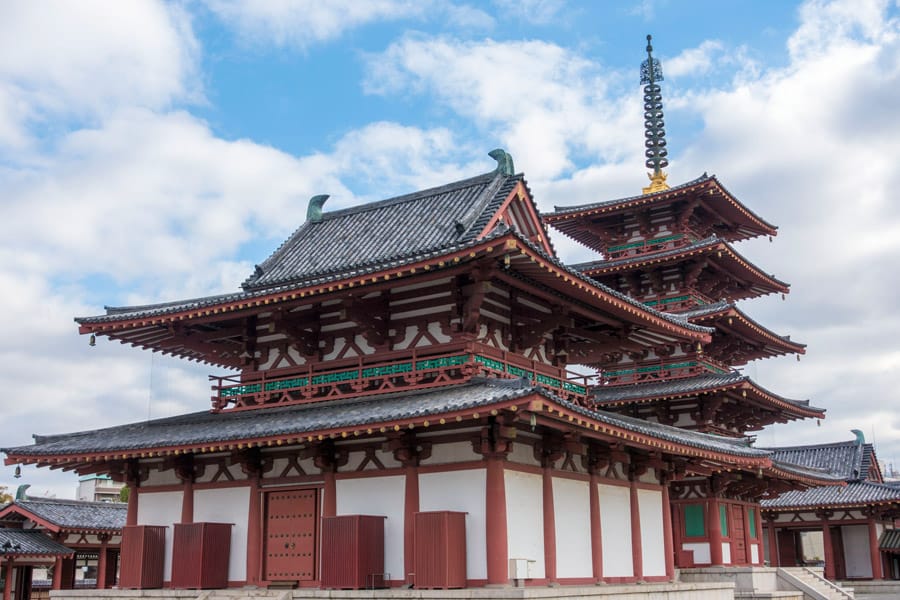
Shitennoji Temple is an ancient temple founded 1,400 years ago. Along with Horyuji Temple in Nara and Koryuji Temple in Kyoto, it is said to have been built by Prince Shotoku, a politician of the Asuka period who also established Horyuji Temple in Nara.
Shitennoji is known as the oldest Buddhist temple in Japan and has been cherished as a temple of popular faith. Today, it reigns as the head temple of Washu, an independent sect that branched off from the traditional Tendai school of Buddhism.
The symbol of Shitennoji is its five-story pagoda, standing 37 meters tall. In the past, it has collapsed seven times due to wars, typhoons, and lightning strikes, and the current tower is the 8th iteration. The main hall houses many buildings designated as valuable cultural properties, making it a recommended spot for those who want to leisurely explore Japanese temples.
Address: 1-11-18 Shitennoji, Tennoji-ku, Osaka
Hours: 8:30-16:30 (April-September), 8:30-16:00 (October-March)
Closed: Never
Phone: 06-6771-0066
Official website: https://www.shitennoji.or.jp/
Namba Yasaka Shrine
Source: Osaka City Official website
Namba Yasaka Shrine, located in Namba, Osaka's Minami area, is a quiet shrine in the heart of the city. While not well-known among Japanese tourists, it has become widely recognized among foreigners due to a distinctive feature within its grounds.
That feature is a 12-meter-tall giant lion head just past the torii gate. Its mouth serves as a stage where dances are performed during festivals. It's also considered a lucky spot where praying can improve your financial fortune.
The lion's eyes are lights, and its nose is a speaker, creating a strong impact that's perfect for social media posts. When I first saw this lion, I immediately took a photo and posted it on my own social media.
Be sure to see the lion head with your own eyes and try to grab some good fortune!
Address: 2-9-19 Motomachi, Naniwa-ku, Osaka
Hours: 6:00-17:00
Closed: Never
Phone: 06-6641-1149
Official website: https://nambayasaka.jp/
Katsuoji Temple
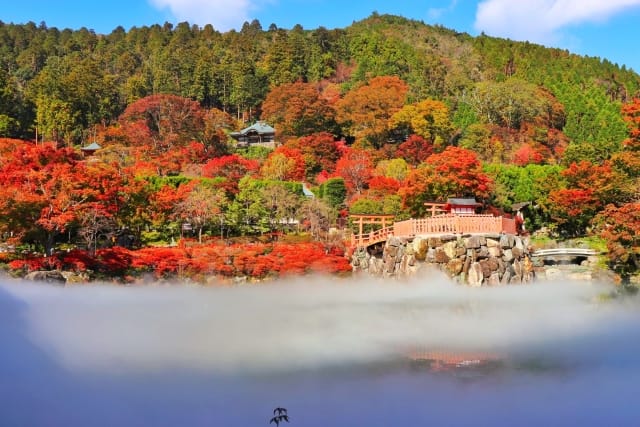
Katsuoji Temple, with its vast grounds covering 80,000 square meters, has been cherished for over 1,000 years as a temple of victory due to the character "katsu" (win) in its name. Located in the mountains of Minoo City in the outskirts of Osaka Prefecture, it's also famous for its beautiful autumn foliage.
The temple is filled with Daruma dolls. In Japan, Daruma dolls have long been treasured as symbols for praying for victory in various endeavors. The sight of countless Daruma dolls within the temple grounds is truly impressive and awe-inspiring.
When praying, you paint an eye on a Daruma doll to make your wish come true. This represents overcoming oneself, making it a recommended temple to visit before an important competition or challenge.
While it's quite far from central Osaka, it's definitely worth a visit if you want to pray for victory.
Address: 2914-1 Aomatani, Minoo City, Osaka Prefecture
Hours: Weekdays and Sundays 8:00-17:00, Saturdays 8:00-18:00
Closed: Never
Phone: 072-721-7010
Official website: https://katsuo-ji-temple.or.jp/
Great access! 2 temples and shrines around Osaka to visit along with other tourist spots
Osaka Castle Hokoku Shrine
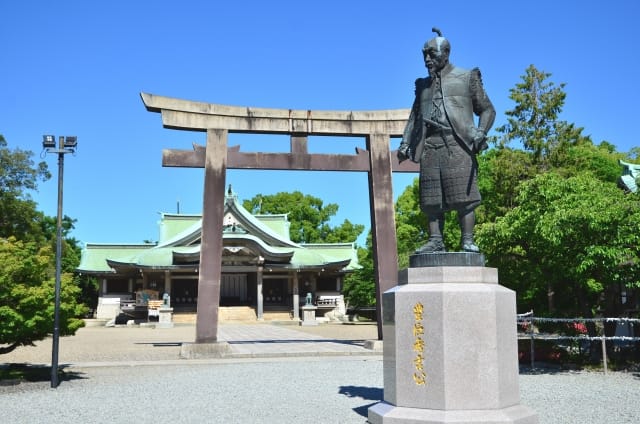
Osaka Castle Hokoku Shrine, located in Osaka Castle Park, is a shrine dedicated to Toyotomi Hideyoshi, known as one of Japan's representative warlords from the Warring States period. Toyotomi Hideyoshi rose from a common farmer to become a unifier of Japan, which is why the shrine is believed to bring good fortune in career advancement.
The shrine sells good luck charms for improving one's work fortune. These charms are shaped like gourds, which have long been considered auspicious plants in Japan, making them great souvenirs.
Within the shrine grounds stands a 5.2-meter bronze statue of Toyotomi Hideyoshi, which is a popular spot for commemorative photos. Every year on August 18th, the Taiko Festival is held to honor Toyotomi Hideyoshi's spirit, drawing large crowds.
If you're aiming for career advancement, be sure to visit Osaka Castle Hokoku Shrine for prayers.
Address: 2-1 Osakajo, Chuo-ku, Osaka
Hours: 9:00-16:50
Closed: Never
Phone: 06-6941-0229
Official website: https://www.osaka-hokokujinja.org/
Recommended to combine with Osaka Castle sightseeing
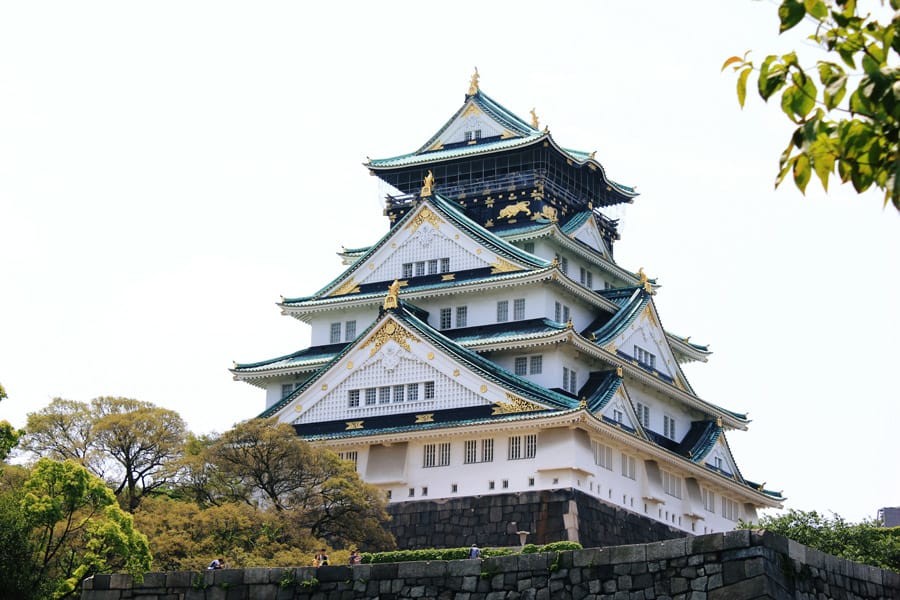
If you're visiting Osaka Castle Hokoku Shrine, it's recommended to combine it with a tour of Osaka Castle. The Hokoku Shrine is located within Osaka Castle Park, and it's only about a 10-minute walk from the shrine to Osaka Castle Keep. Therefore, it's ideal to visit the shrine after exploring Osaka Castle Keep.
Osaka Castle Park is filled with attractions like the Miraiza Osaka-jo shopping mall and the Nishinomaru Garden, providing enough entertainment for a full day's visit.
If you are interested in Osaka Jo Castle, check the article below! I summarized in more details and how I felt there.
Hozenji Temple
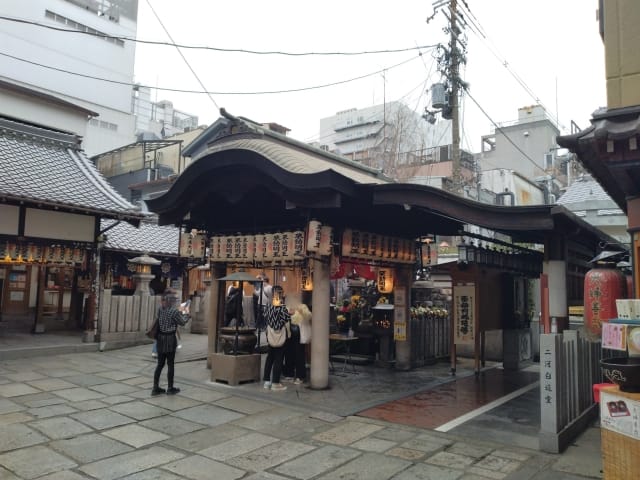
Hozenji Temple, located in Sennichimae, is famous for its Mizukake Fudo statue, affectionately known as the "water-splashing Fudo." It's said that splashing water on this statue brings good fortune. After years of having water poured on it, the Mizukake Fudo is now beautifully covered in green moss.
The Mizukake Fudo is believed to bring various benefits, including recovery from illness, matchmaking, and prosperity in business. Gently splashing water on it can make you feel happy, so be sure to visit when you're in Sennichimae.
The temple grounds also have other attractions, such as the Konpira-do Hall dedicated to the guardian deity of maritime transport, and the Hatsu Daimyojin enshrined for business prosperity.
When you see the Fudo statue covered in moss, you might be tempted to pour lots of water on it. However, if it's crowded, please be considerate of the people waiting behind you.
Address: 1-2-16 Namba, Chuo-ku, Osaka
Hours: Open 24 hours
Closed: Never
Phone: 06-6211-4152
Official website: https://houzenji.jp/
Enjoy exquisite cuisine and drinks in Hozenji Yokocho at night!
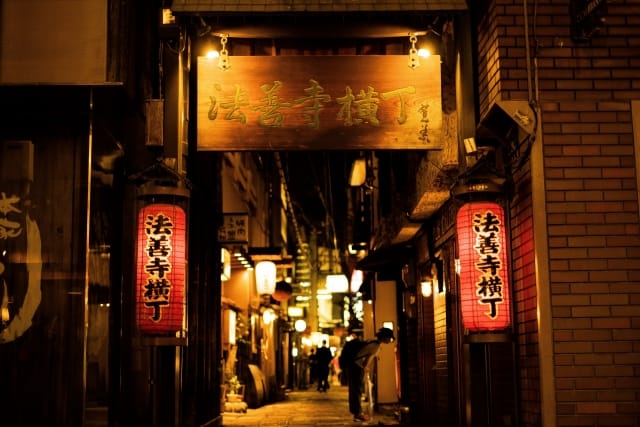
Hozenji Yokocho, a small alley quietly tucked beside Hozenji Temple, is 80 meters long and 3 meters wide. This narrow stone-paved alley is packed with shops offering exquisite cuisine and drinks.
Hozenji Yokocho, which feels like stepping back in time to old Japan, transforms into a uniquely atmospheric street at night when lanterns are lit. If you want to casually experience a quintessentially Japanese atmosphere, Hozenji Yokocho is the perfect spot.
If you are interested in Hozenji Yokocho Alley, check the article below! I summarized in more details and how I felt there.
Certain to boost your luck? 2 famous power spot temples and shrines around Osaka
Imamiya Ebisu Shrine
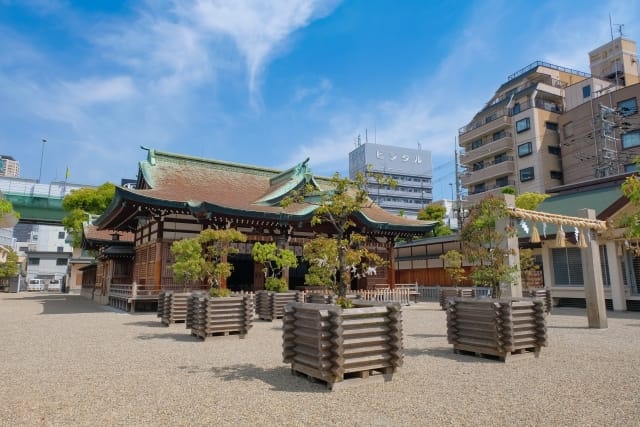
Imamiya Ebisu Shrine is famous for enshrining Ebisu-san, known as the god of commerce in Osaka. With a history dating back to 600 CE, it is said to have been founded by Prince Shotoku, who also established Shitennoji Temple, as a guardian deity to protect this area from plagues and other calamities.
Since then, it has been widely loved by Osaka's merchants as a shrine for seeking fortune and praying for business prosperity. The Toka Ebisu Festival, held for three days from January 9th to 11th each year, is famous and attracts worshippers from all over Osaka seeking good fortune.
During this festival, it's popular to purchase decorated bamboo rakes called "kumade," which are considered lucky charms. Many business people buy these rakes to pray for prosperity in their business for the year.
The colorful kumade are enjoyable just to look at, so even taking a commemorative photo with them can bring you good luck.
Address: 1-6-10 Ebisunishi, Naniwa-ku, Osaka
Hours: 6:00-17:00
Closed: Never
Phone: 06-6643-0150
Official website: https://www.imamiya-ebisu.jp/
Otori Shrine
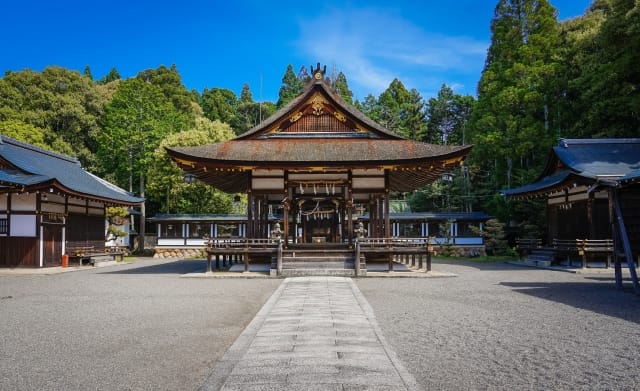
Otori Shrine, located in Sakai City, Osaka Prefecture, is a shrine with over 1,000 years of history. Its enshrined deity is Yamato Takeru no Mikoto, who appears in the Nihon Shoki and Kojiki, Japan's ancient historical records.
Yamato Takeru no Mikoto is famous as a deity who won consecutive battles, so Otori Shrine is known as a shrine where one's luck in competition improves. Particularly famous is the "winning fortune slip" (kachi mikuji). If you draw a transparent paper with "strong luck" written on it from a wooden box, it's said that good fortune will come your way.
I've tried this fortune slip several times, but I've never managed to draw the transparent paper. It's not easy to get, so you'll be quite happy if you do.
You can try the winning fortune slip for 200 yen per attempt, so why not give it a shot as a test of your luck?
Even if you don't succeed, praying to the large camphor tree with exposed roots in the shrine grounds is said to bring benefits such as business prosperity and improved financial fortune. If you want to boost your luck even a little, be sure to visit Otori Shrine.
Address: Ohtori Kita-machi, Nishi-ku, Sakai City, Osaka Prefecture
Hours: 9:00-16:00
Closed: Never
Phone: 072-262-0040
Official website: https://www.ootoritaisha.jp/
3 Recommended Tours to Fully Experience Osaka
Discover Osaka, a world-famous tourist destination, through MagicalTrip's three unique tours. Experience the city's diverse attractions, from its history and food culture to its vibrant nightlife.
5-Hour Osaka Highlights Bike Tour with Lunch
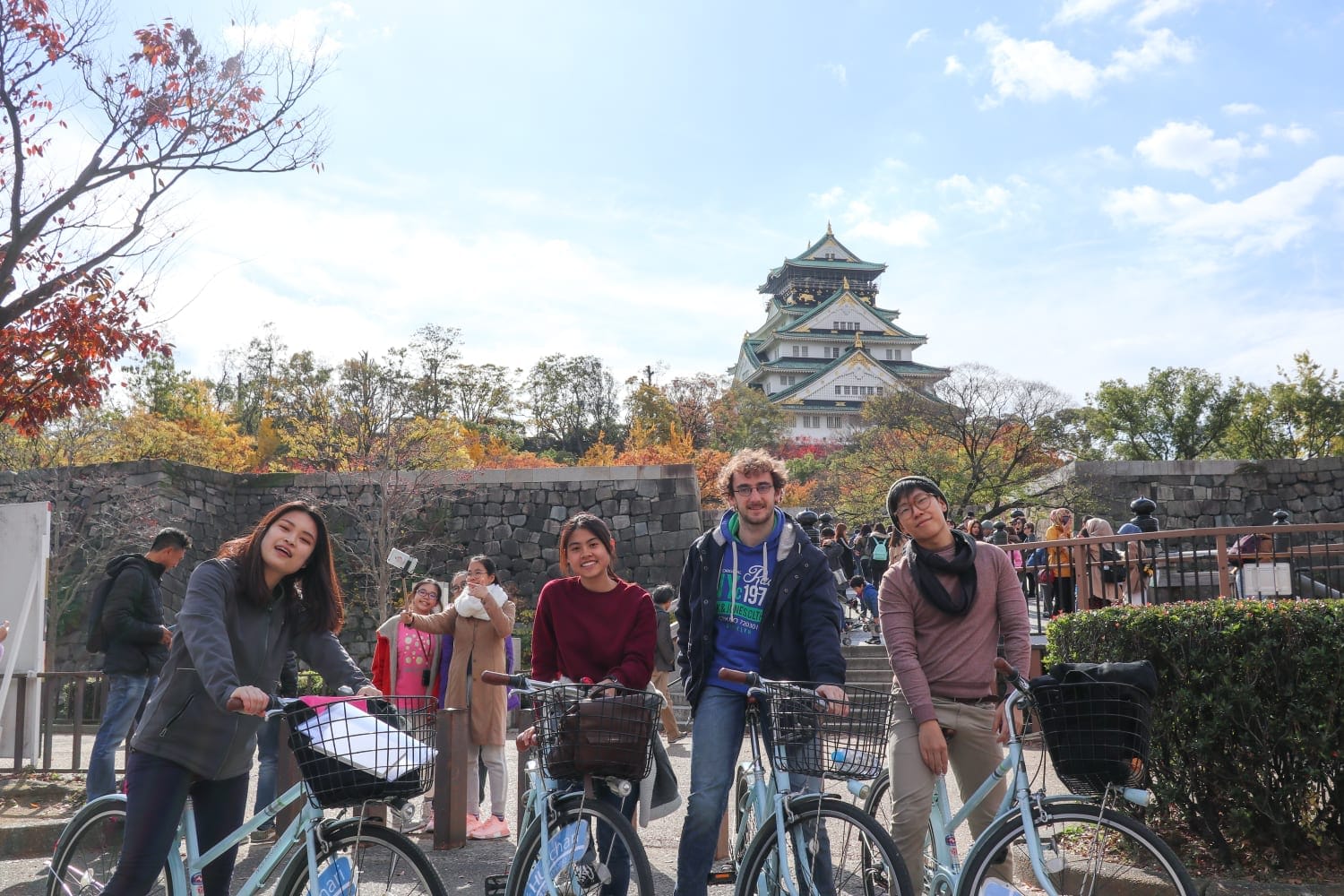
This comprehensive 5-hour cycling tour is available for $64.90 (approximately ¥9,500). The package includes a cross bike, lunch, matcha tea, and insurance coverage. Anyone taller than 150cm can participate.
The 11km course, which is mostly flat, centers around the 105-hectare Osaka Castle Park. English-speaking guides will teach you about Osaka's daily life and Shinto culture at local shrines and shopping streets. At the Osaka Museum of Housing and Living, you can learn about the city's history in detail.
At Osaka Castle, one of Japan's three major castles, there's plenty of time for interior tours and photography. Guides offer a photo service, with pictures delivered by email later.
The tour accommodates vegetarian menus, though the soup stock is seafood-based. Vegan and gluten-free options are not available. Please notify about any allergies at least one day in advance.
Weather considerations are thorough - tours can be canceled the day before if there's a 40% or higher chance of rain, and cancellations or schedule changes are free up to 24 hours in advance.
For more details: 5-Hour Osaka Highlights Bike Tour with Lunch
Osaka Local Foodie Tour in Dotonbori and Shinsekai
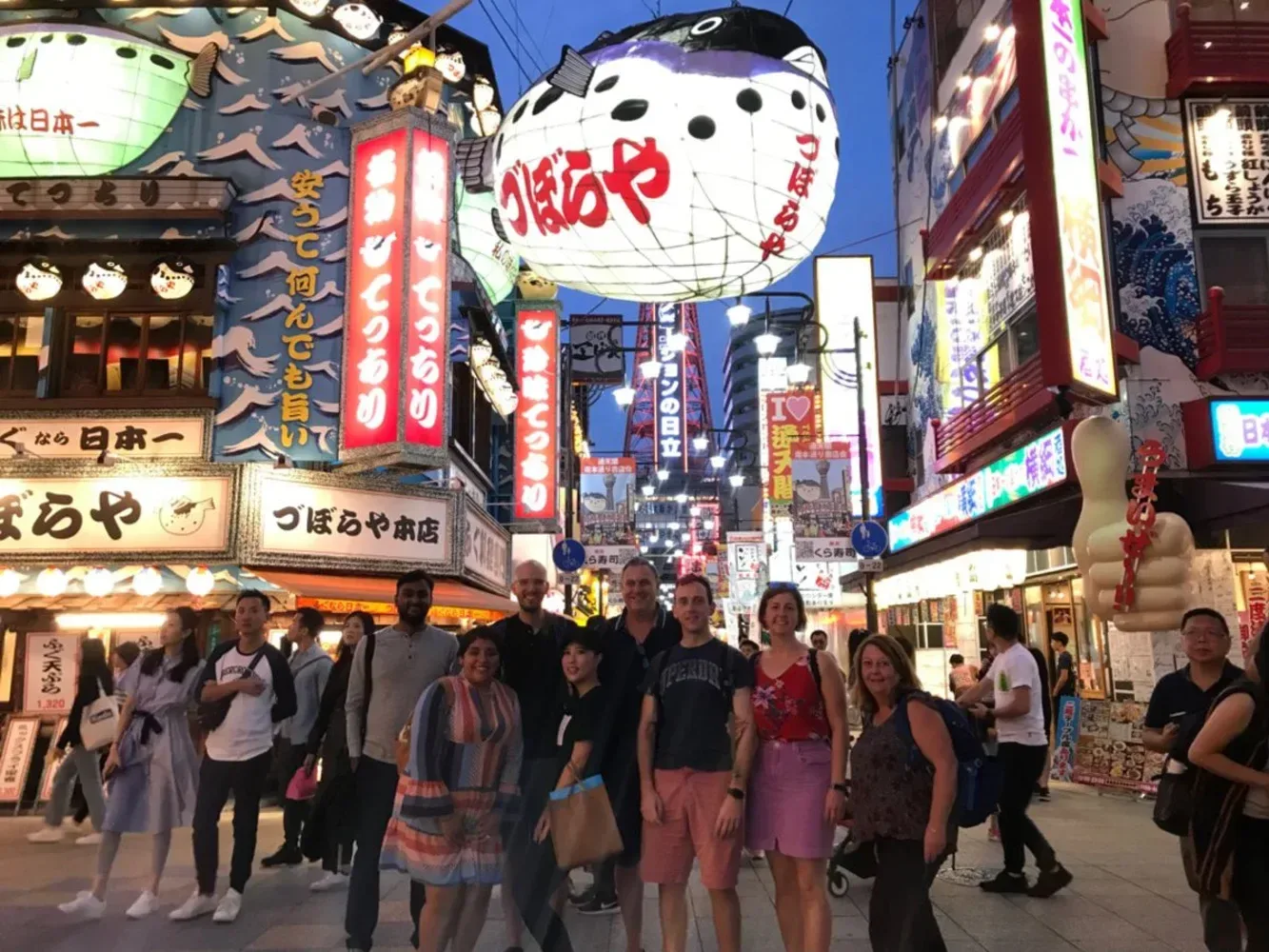
For $93.44 (approximately ¥14,000), enjoy eight different Osaka specialties during this 3-hour food tour in the city known for its culinary delights. Visit local guide-recommended establishments for takoyaki, okonomiyaki, kushikatsu, and more, including three drinks.
The route from Shinsekai to Dotonbori includes not only tourist spots but also hidden backstreets and temples known only to locals. English-speaking local guides provide detailed explanations about the history and culture of each location and dish.
This popular tour, experienced by over 4,700 people, is well-received by couples, families, and seniors alike. Vegetarian options are available with advance notice, though choices are limited, and gluten-free options are not available.
Meeting point is at Imamiya-Ebisu Station, ending at Namba Station. Free cancellation up to 24 hours in advance, with date changes possible.
For more details: Osaka Local Foodie Tour in Dotonbori and Shinsekai
Osaka Bar Hopping Night Tour in Namba
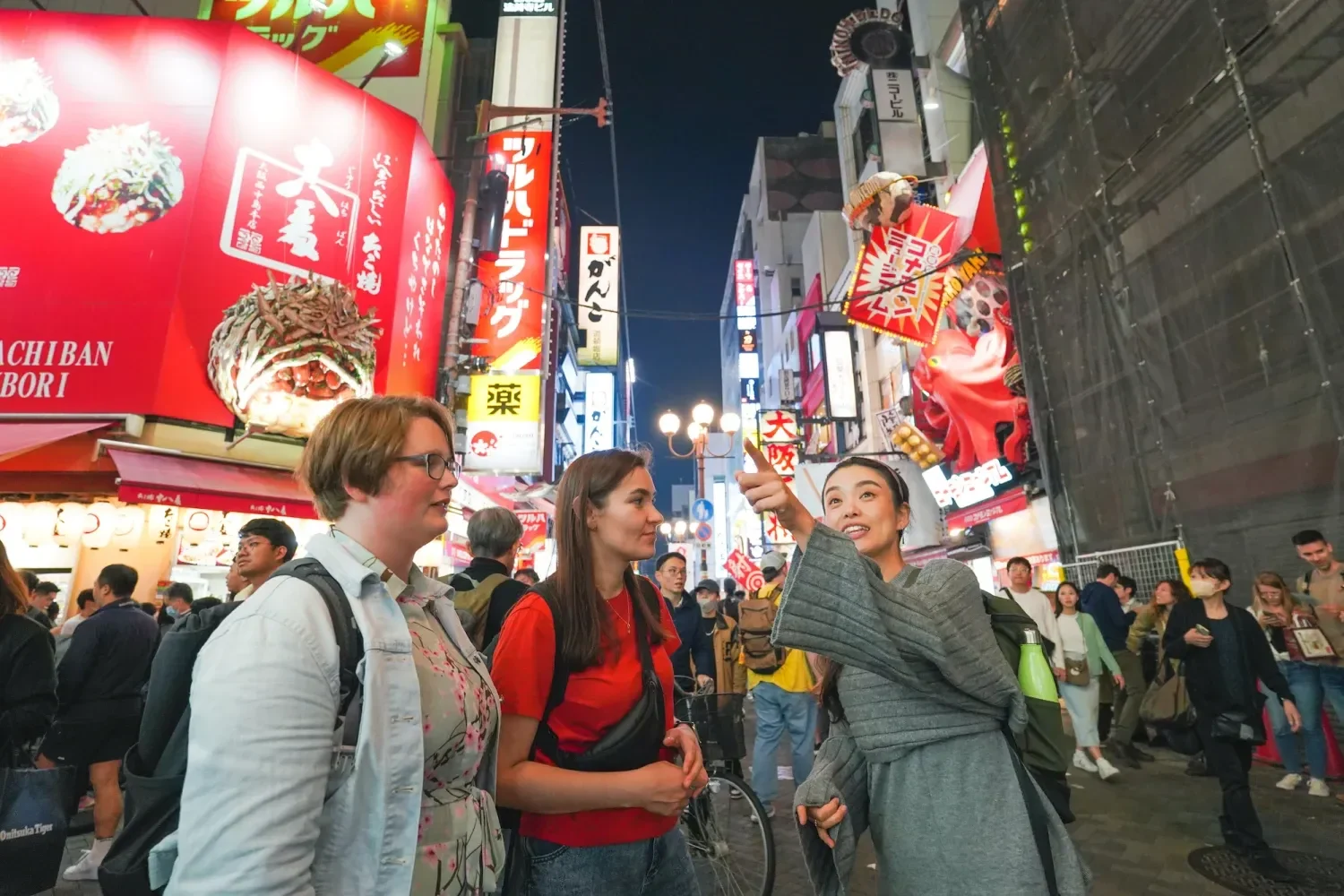
This 3-hour night tour costs $95.44 (approximately ¥14,000) and visits three izakayas. Including meals and 3-4 drinks, it offers a taste of Osaka's traditional food culture and local atmosphere.
Explore the lesser-known back-Namba area with local English-speaking guides, visiting historic areas like Hozenji Yokocho and Dotonbori. Enjoy Osaka specialties like kushikatsu, takoyaki, and okonomiyaki.
Tour photos are sent by email later, allowing you to capture memorable shots including Dotonbori's night scenery. Those 20 and older can enjoy draft beer, sake, and shochu, while the tour is open to participants 15 and older.
Free cancellation up to 24 hours in advance, with date changes possible. Bookings can be made up to 15 months ahead. Vegetarian options are available, but vegan and gluten-free options are not.
For more details: Osaka Bar Hopping Night Tour in Namba
Each tour offers a different perspective on Osaka's attractions. From cycling to food exploration to izakaya hopping, these comprehensive tours allow you to fully enjoy Osaka throughout the day.
With experienced English-speaking guides accompanying you, you can participate with peace of mind. Why not add one of these tours to your Osaka travel plans?


